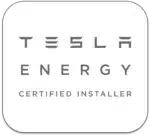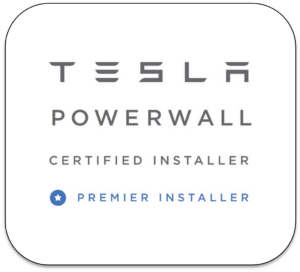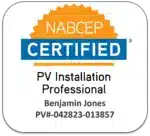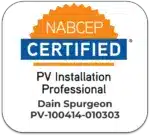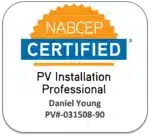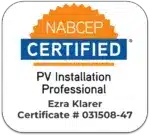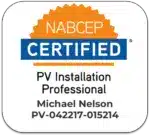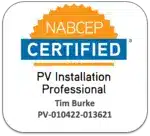Commercial Solar Financing & Incentives
Make your commercial solar panel installation more affordable
SAve 30% on Commercial solar. Start your project Today! 877-312-7456
Commercial solar panels cut operating costs and save businesses money! But that’s not the only benefit of solar panels for businesses, schools, institutions, and government buildings—commercial solar installations also qualify for incentives, grants, and tax benefits.
Commercial solar incentives can reduce your upfront installation costs, speed up your payback period, and increase your ROI. Solar Energy Solutions has helped hundreds of businesses install solar panels. We can guide you through the process to maximize savings and help you go solar now.
Commercial Solar Incentives
The federal solar tax credit (also known as the investment tax credit or ITC) is the best and most popular commercial solar incentive. It is a dollar-for-dollar credit that reduces your federal tax liability by a percentage of your solar installation costs for the year you install your system.
Commercial solar energy systems that begin construction before 2033 are eligible for a 30% federal tax credit. Almost all commercial and utility-scale solar projects qualify for the solar tax credit. Contact Solar Energy Solutions to learn more.
Because they don’t pay taxes, non-profit organizations have been historically excluded from solar tax incentives. The Inflation Reduction Act of 2022 changed that by introducing a direct pay option for tax-exempt organizations, including governments, churches, and public schools. Qualifying tax-exempt organizations can now receive the full value of the solar tax credit in a direct cash payment.
Eligible states: The solar tax credit is a federal solar incentive. Commercial solar projects in all 50 states are eligible.
The production tax credit (PTC) is a per-kWh tax credit. Under the PTC, commercial solar projects will receive an annual tax credit based on the amount of solar energy they produce for the first ten years of their system’s operation. Projects will receive a base credit that is adjusted annually based on inflation.
Commercial solar projects must choose between the federal solar tax credit and the Production Tax Credit—they cannot receive both. Utility-scale projects and large commercial solar installations in extremely sunny areas will likely get more value out of the PTC. But most commercial solar projects will get more value out of the ITC.
Eligible states: The Production Tax Credit is a federal solar incentive. Commercial solar projects in all 50 states are eligible.
The Modified Accelerated Cost Recovery System (MACRS) commercial solar incentive is a depreciation method that allows businesses to recover their investment in certain assets over a specified period of time through annual tax deductions. Qualifying commercial solar energy equipment is eligible for a cost recovery period of five years.
Commercial solar projects can receive both the solar tax credit and MACRS depreciation. For solar projects on which the federal solar tax credit is also claimed, the project’s depreciable basis is reduced by half the value of the 30% solar tax credit.
Eligible states: MACRS depreciation is a federal incentive. Commercial solar projects in all 50 states are eligible.
The USDA Rural Energy for America Program (REAP) helps agricultural producers and rural small business owners install their own renewable energy systems. The program provides grant funding up to 50% of total eligible project costs. The 30% federal solar tax credit can be added to the 50% grant for a combination of 80% off the initial project cost! The program also has loan financing options for remaining project costs.
Eligible states: The Rural Energy for America Program is a federal incentive. Rural commercial solar projects in all 50 states are eligible.
Net metering is a solar incentive system that allows solar owners to trade energy with the electric grid. When your panels produce more than you need, you can export the excess electricity to the grid in exchange for a credit to your account. This offsets the cost of electricity you buy from the grid, increasing the value of your solar energy system. With net metering, solar panels are like a virtual tenant paying rent to be on your property.
Eligible states: Net metering policies are decided at the state level and vary by utility company. Many states have net metering programs, and some are more favorable than others. There is currently net metering in Indiana, Illinois, Ohio, Kentucky, and Virginia. However, net metering benefits have been reduced in many states. Here’s the latest on net metering in Indiana. Net metering in Kentucky is also under attack—go solar now to lock in net metering benefits before it’s too late!
Commercial Solar Loans & Financing
The best way for a business to finance a solar panel installation is typically by utilizing the extensive tax benefits available for commercial solar panel installation. With the investment tax credit, you can reduce your project costs by 30%, and with MACRS depreciation you can recover your remaining investment faster with annual deductions.
REAP Loan Solar Financing
Small rural businesses and agricultural producers have additional options for commercial solar financing through the USDA Rural Energy for America Program (REAP).
Eligible rural small business and agricultural producers can receive:
- Loan guarantees on loans up to 75% of total eligible project costs
- Grants for up to 50% of total eligible project costs
- Combined grant and loan guarantee funding up to 75% of total eligible project costs
REAP benefits can be combined with the 30% solar ITC, making solar panel installation extremely affordable for farmers and rural small businesses. Talk to Solar Energy Solutions today to learn more!


